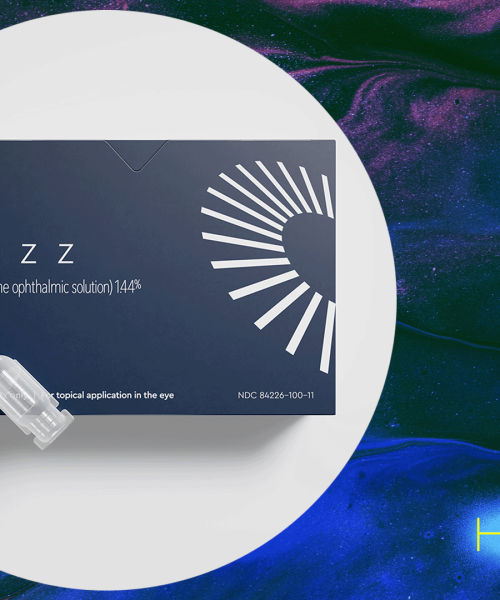It’s a hot (yet also sleepy) debate that ignites twice a year in the United States: Why are we still changing the clocks? The “spring forward” every March can feel particularly volatile, with research linking that loss of a precious hour of sleep to more heart attacks and fatal car accidents. Now, a new study published today in the journal PNAS indicates that sticking with standard time may improve health.
Three time policies
While many people support ending these seasonal time shifts, disagreements still persist over which policy to adopt–staying in standard time all year, or implementing permanent daylight saving time.
“You have people who are passionate on both sides of this, and they have very different arguments,” Dr. Jamie Zeitzer, a study co-author and circadian physiologist at Stanford Medicine, said in a statement.
Supporters of permanent daylight saving time claim that more evening light could save energy, deter crime, and give people more leisure time after work. According to Zeitzer, golf courses and open-air malls are big proponents of this policy. However, a trial of permanent daylight saving time in 1974 proved so unpopular that it was abandoned after less than a year. In 1986, the duration of daylight saving time was eventually increased from six months to seven months and bills proposing permanent daylight saving time have been also introduced in Congress nearly every year since 2018. However, none of these measures have passed.
Proponents of permanent standard time contend that more morning light is better for our health. Organizations including the American Academy of Sleep Medicine, the National Sleep Foundation, and the American Medical Association have endorsed year-round standard time.
“It’s based on the theory that early morning light is better for our overall health,” Zeitzer said of these endorsements. “The problem is that it’s a theory without any data. And finally, we have data.”
[ Related: All the ways daylight saving time screws with you. ]
Beating the clock
In the study, a team from Stanford Medicine compared three different time policies: permanent standard time, permanent daylight saving time, and the biannual shifting we currently do. They compared how all three affect people’s health and circadian rhythms, the body’s innate clock that regulates several bodily functions.
Changing the clocks twice a year is the worst thing we can do for our circadian rhythms, according to the team’s results. Using either permanent standard time or permanent daylight saving time would be healthier.
However, permanent standard time also appears to benefit the most people. By modeling light exposure, circadian impacts, and health characteristics county by county, the team estimates that using permanent standard time (and not springing ahead in March) could prevent some 300,000 cases of stroke per year. By comparison, permanent daylight saving time would achieve about two-thirds of that same effect.
“We found that staying in standard time or staying in daylight saving time is definitely better than switching twice a year,” said Jamie Zeitzer.
For sleep studies, it is also important to remember that the human circadian cycle is not exactly 24 hours. For most people, it’s more like 24 hours and 12 minutes and light can alter this cycle. Light in the morning speeds up the circadian cycle, while evening light slows things down. According to Zeitzer, we generally need more morning light and less evening light to stay in sync with the 24-hour day and an out-of-sync circadian cycle has been associated with a range of poor health outcomes.
“The more light exposure you get at the wrong times, the weaker the circadian clock. All of these things that are downstream — for example, your immune system, your energy — don’t match up quite as well,” Zeitzer said.
To study light exposure under each time cycle, the team used a mathematical model based on local sunrise and sunset times and its effect on circadian burden. Circadian burden is essentially how an individual’s innate clock must shift in order to keep up with the 24-hour day.
Over one year, they found that most people would experience the least circadian burden under permanent standard time, which prioritizes morning light. The benefits of this low circadian burden vary based on geographical location within a time zone and whether they prefer mornings to night.
Additionally, the 15 percent of the population considered to be early-risers, have circadian cycles that are shorter than 24 hours. These people would experience the least circadian burden under permanent daylight saving time, since evening light would bring their circadian cycles closer to 24 hours.
Time health outcomes
To take a closer look at specific health outcomes and circadian burdens, the team used data from the Centers for Disease Control and Prevention on the prevalence of arthritis, cancer, chronic obstructive pulmonary disease, coronary heart disease, depression, diabetes, obesity, and stroke. They were particularly interested in the rate of stroke and obesity, as these conditions are both influenced by circadian health.
According to their models, permanent standard time would lower the nationwide prevalence of obesity by 0.78 percent and the prevalence of stroke by 0.09 percent. However, these somewhat small percentage changes would amount to about 2.6 million fewer people with obesity and 300,000 fewer cases of stroke.
Under permanent daylight time, the nationwide prevalence of obesity would decrease by 0.51 percent, or 1.7 million people. Stroke would decrease 0.04 percent, or 220,000 cases.
The models did not predict any significant difference in conditions such as arthritis that have no direct link to circadian rhythms.
[ Related: Can tracking make my sleep worse? The quiet torment of sleep tech. ]
No one policy will make it brighter in winter
While this study did provide some concrete examples of which policy should be implemented to better health, there are still unanswered questions and different variables to consider. The team did not account for several factors that could influence real-life light exposure, including weather, geography, and human behavior.
In their calculations, the researchers assumed consistent and relatively circadian-friendly light habits, but many people have much more erratic sleep schedules and spend more time indoors in reality.
“People’s light habits are probably much worse than what we assume in the models,” Zeitzer said. “Even in California, where the weather is great, people spend less than 5 percent of their day outside.”
While circadian health seems to favor permanent standard time, the results are not enough to overshadow other considerations. Still, Zeitzer hopes this type of research will encourage similar evidence-based analyses from other fields, such as economics and sociology.
Importantly, time policy is simply choosing which clock hours represent sunrise and sunset. It does not alter the total amount of light there is, and no policy will add light to those dark winter months.
“That’s the sun and the position of Earth,” Zeitzer said. “We can’t do anything about that.”






